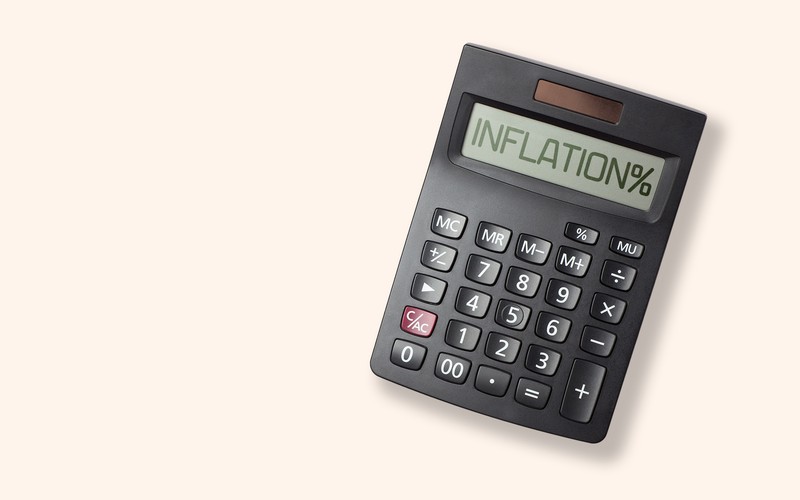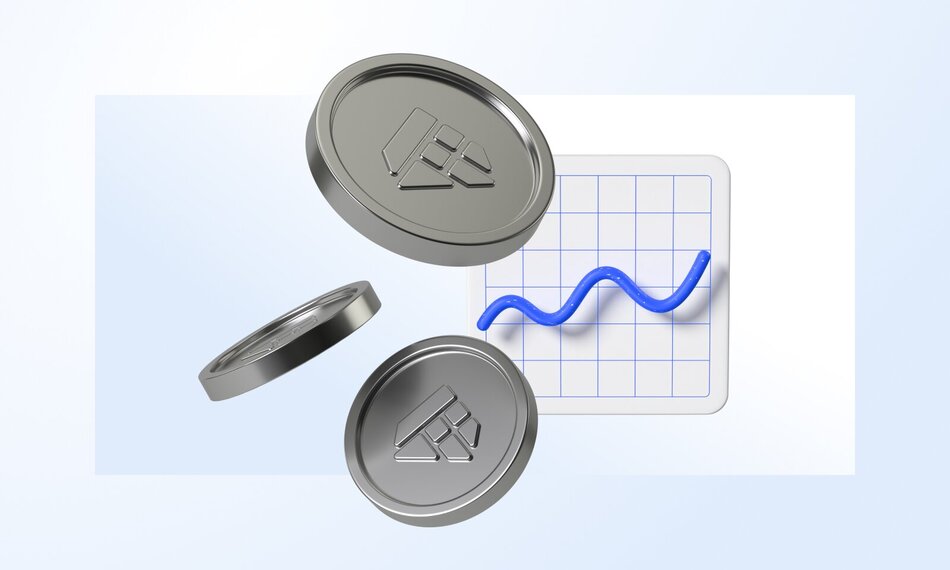Your morning cup of coffee has been costing more lately, as have groceries, household cleaning products, and meals out with friends after work. You can blame inflation.
Inflation impacts every aspect of the economy, from your grocery bill to the interest rates you pay on a mortgage to the returns you can expect to see on your investments. Understanding this impact becomes crucial, especially during periods of high inflation, so you can better manage your finances and investments.
What Is the Inflation Rate?
Inflation refers to the idea that the costs of goods and services will increase over time, reducing the value of a currency. The inflation rate is the rate at which inflation increases over a specific period. Much like inflation, this rate is a relationship between the value of the currency and the cost of goods and services.
Inflation is important to understand because it impacts your purchasing power. This means you can buy less with the same amount of money in the current year, and your purchasing power has decreased. Or, put another way, you need more money to purchase the same amount of goods.
The inflation rate reflects the decline in the value of a nation’s currency. It is typically expressed as a percentage. Inflation impacts the cost of living and the growth of an economy, with higher rates of inflation directly correlating to slower economic growth.
Why Is the Inflation Rate Important?
The Federal Reserve, which maintains a steady inflation rate, likes to see an annual inflation rate of 2%. The growth of the inflation rate is significant because rising prices indicate a healthy economy. Negative inflation, also called deflation, is considered harmful to the economy because falling prices can lead to higher consumer savings, which means lower consumer spending and, therefore, less economic growth. This results in companies having to slow down production, which can lead to layoffs and salary reductions.
Inflation becomes a problem when the rate of inflation rises too high too quickly. When this happens, consumer purchasing power goes down, and since everything is now much more expensive, people stop buying as many goods and services. Borrowing, too, becomes more expensive, resulting in fewer purchases.
Finally, high rates of inflation can impact your investment strategy. For example, if the inflation rate stays high for long periods, it impacts the length of time your retirement savings can last.
Why Inflation Happens
Inflation rates depend on market forces, and these market conditions dictate the rate of inflation in any economy. The factors causing inflation can be classified into three categories:
Demand-Pull Inflation
This is the classic demand-and-supply inflation, which happens when there is more demand for goods and services than supply. For example, if there is a regular demand for rice or grain in a particular year, but agricultural conditions have led to less production or import, the cost of rice and grain will increase and become more expensive for the consumer.
Cost-Push Inflation
This happens when the cost of production goes up. If it costs more to produce goods and services, the price of those goods and services will also go up, leading, once again, to the consumer paying more for those goods and services than they did before.
Built-In Inflation
This happens due to the first two types of inflation, when inflation has already been high because of demand-pull or cost-push inflation. In this scenario, workers need higher salaries to maintain their living costs, given the low purchasing power of their dollar. When workers are paid more, this reflects on the cost of goods and services, raising the prices even further and causing additional inflation.
The gross domestic product, or GDP, measures the overall economy's growth or contraction over a given period.
Metrics for Consumer Inflation
There are two major measures of inflation in the U.S.: the Personal Consumption Expenditures Price Index (PCE) and the Consumer Price Index (CPI). Both measure inflation and track expenditures differently.
The Personal Consumption Expenditures Price Index (PCE)
The PCE is assembled by the Bureau of Economic Analysis (BEA), which collects business data for calculation. This is different from the CPI index, which sources data from consumers. Many economists prefer the PCE calculation, as does the FED. However, it will consider other inflation data when setting monetary policy.
The Consumer Price Index (CPI)
The CPI is the most common indicator of inflation and is completed by the U.S. Bureau of Labor Statistics (BLS) monthly. The CPI takes the average prices of everyday items in a basket of goods, such as milk, cereal, and coffee, and non-food items, including transportation expenses, housing, clothing, furniture, haircuts, and medical expenses. The prices per item are completed each month, and then the price changes are used to evaluate the expenses associated with the cost of living. The CPI has a base year that it uses for comparison.
Also note: There are two different survey bases for calculating CPI. The Consumer Price Index for All Urban Consumers (CPI-U) covers about 93% of the U.S. population because most people live in cities.
How to Calculate the Inflation Rate
The inflation rate formula is as follows:
Inflation Rate = ((B-A)/A) x 100
Where A is the starting cost of the good or service and B is the ending cost.
To use the formula, you’ll want to subtract the starting price from the ending price to arrive at the price change. Then divide that number by the starting price. To arrive at a percentage, multiply this number by 100.
You can also use the CPI Inflation Calculator on the U.S. Bureau of Labor Statistics website.
How Does Inflation Affect Real Estate?
In addition to your grocery bill and living expenses, inflation affects your real estate purchases and investments. Here’s what you can expect during periods of high inflation.
Increased Cost of Borrowing
When inflation and prices rise, so do the interest rates for borrowers and, as a result, the cost of your real estate investment. Banks will look to mitigate risk, which means fewer loans and more stringent credit checks.
That said, if you took out a mortgage before the inflationary period, you’d still owe the same dollar amount, but that money is worth less than initially borrowed, which can work out in your favor.
Increased Rental Rates
While your costs will go up during inflationary periods, so will your income as a landlord. Rents tend to rise during periods of inflation, mainly due to the higher demand for rental units. With mortgage interest rates rising, fewer people can buy property. There are also fewer constructions and new builds during high inflation, which means more renters are in the marketplace. The rental prices increase with the supply of rental units remaining the same.
Appreciation in Property Value
With fewer properties being built and development plans potentially stalled during periods of high inflation, existing properties become more valuable as inventory levels dip. This often leads to a higher appreciation of property values.
REITs Grow in Value
REITs or Real Estate Investment Trusts tend to grow in value during inflationary periods because as real estate rents and values grow, so does the value of the REITs. In fact, REIT dividends have outpaced inflation as measured by the CPI in all but two of the last twenty years.
Rising rates of inflation will, no doubt, have an impact on your financial life. As a real estate investor, you may see a greater return on investments in the form of rental income, increased property values, and better dividends from your REITs. On the other hand, you’ll also see higher interest rates and significantly higher prices if you’re looking to purchase a property.









